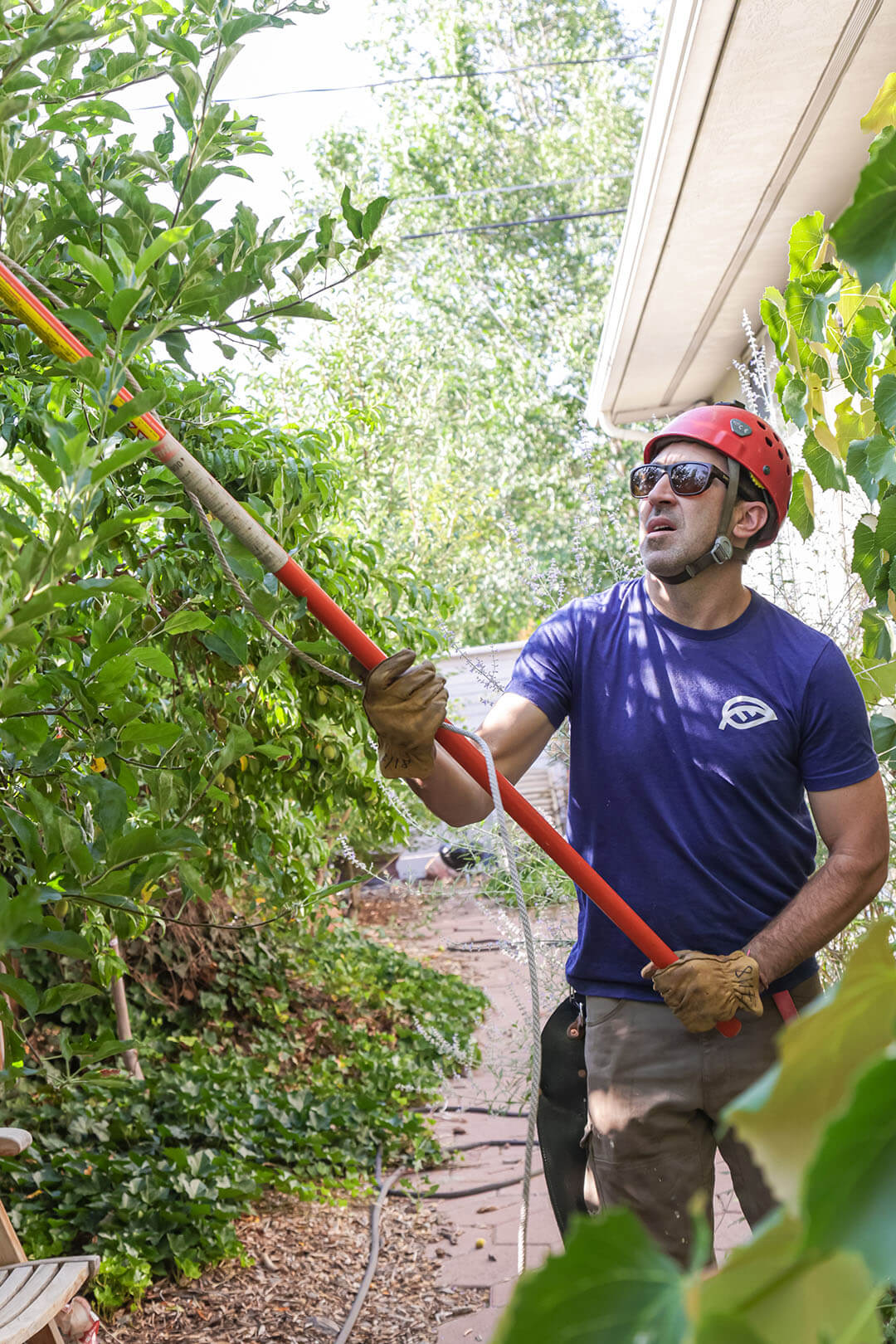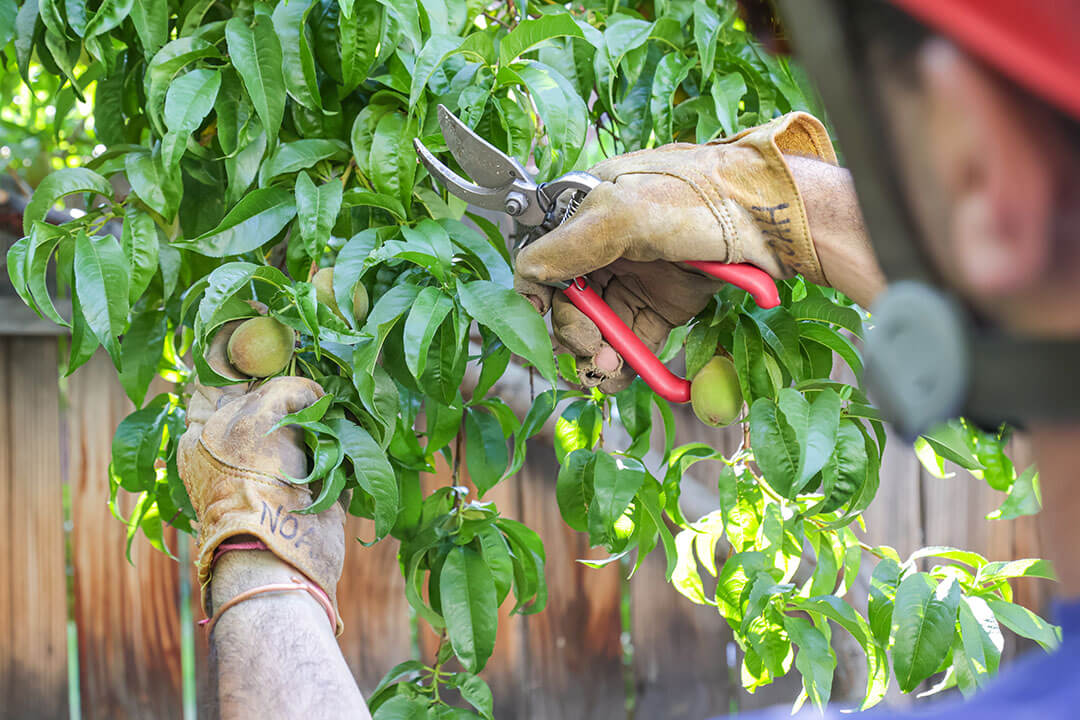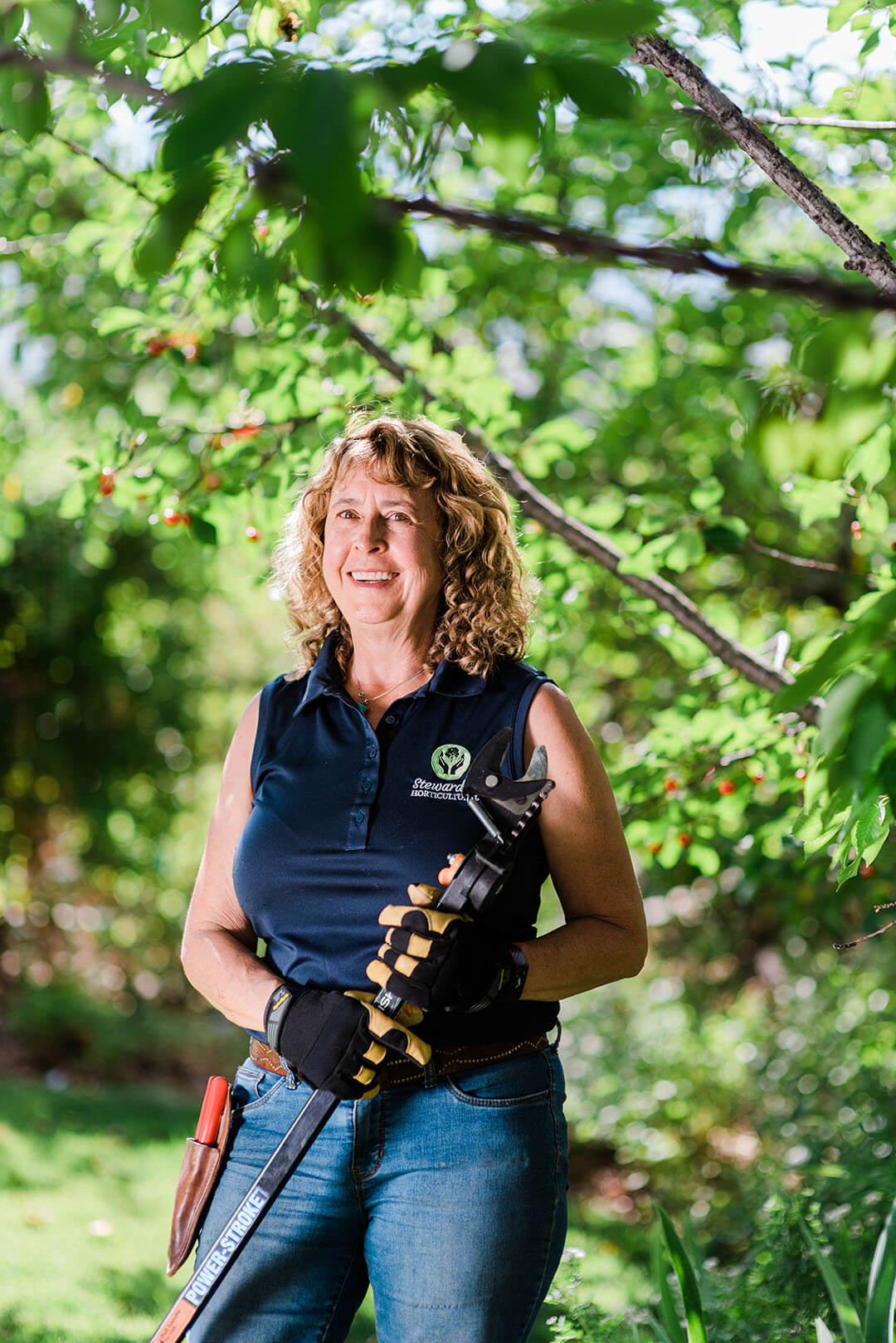Tips for setting your trees up for success.
Ever wonder how to help your fruit tree live its best life? In this changing climate, it can be challenging to know just what to do to make that happen. We talked with some Reno-based arborists to demystify fall tree care here.
Leslie Lyles, owner of Stewardship Horticultural, shares this wisdom on best practices for prepping home-scale fruit trees for fall and winter: “Don’t prune … Fall is the worst time of year to prune. In the fall, you have a lot more wood to keep fungi sporulating, and disease organisms are sporulating as well. And it’s the time of year where trees are slower at compartmentalizing, which increases your chance of disease.”
It can be tempting to prune trees that have spent the summer putting out new growth and perhaps look a little unruly, or trees that look to be struggling, but disease sporulation is gross (do a video search of fungi sporulating and you’ll have sci-fi nightmares for weeks, I promise you). Pruning before the tree knows to go dormant can damage the tree.
“They will get stimulated to grow (from pruning) and pull energy from their root systems to put out new growth at a time when as soon as winter hits, that foliage will be frozen and probably killed,” Lyles adds. “So now they’ve depleted their roots and don’t send any energy to them for the next year, which will make the next year hard for them to grow, ultimately keeping them in a cycle of perpetual stress.” Sounds terrible, right?
Lyles’ rule of thumb? “Wait until you see solid fall color in all the trees. Then you know the plant or tree has been signaled that winter is coming. Then you do a lighter pruning.”
If you must prune, do so only to the deadwood. For younger trees, you can prune up to 20 percent of the tree; for older trees only 5 to 10 percent.

Then check for the following:
- Fruit: Remove all of the fruit left on the branches or on the ground, as they can be vectors for disease and insects.
- Bugs: If the leaves are splotchy or curling, that may indicate bugs are creeping in. To get rid of the bugs, you can use dormant oils, which are heavy and can suffocate them. In the case of aphids, you can simply blast them with water to the ground (it’s extremely satisfying, I can attest), so that they spend their entire life cycle getting back up the tree rather than reproducing.
- Water sprouts: These are the spindly, vertical offshoots from lateral branches that have leaves on them. If you have done any pruning and then note those little guys coming up, that is your tree telling you that it is under stress and has been overpruned.
And then water. Water, water, water.
“The point I try to drive home to all of my clients,” says Noah Chubb-Silverman of Noah’s Park Tree Care in Reno (and co-founder of Reno Bike Project), “is that water is the most important thing you can do for any tree, so make sure it is getting the water it needs. If you are going to hire an arborist to do one thing, it should be to make sure the tree is getting watered properly.”

Even though temperatures are dropping as you head into winter, and you might think your plants and trees need less water, don’t be misled! Soil temperatures cool down much more slowly than ambient temperatures, and roots, especially tree roots, need water to grow during the fall and winter. You can use a screwdriver or small shovel to dig 8 to 10 inches underneath the drip zone of a tree to assess moisture. The soil should hold together when grasping it in your hand.

Happy tree tending, and happy fall, y’all.
Cameron Cox is an ecological landscape designer and spends her spare time geeking out on plants, hiking with her dogs, and pretending cheese is kale.
RESOURCES
For tree care services
Noah’s Park Tree Care
Noahsparktreecare.com
For tree care services and education
Stewardship Horticultural
Find Stewardship Horticultural on Facebook
Too much fruit?
Reno Gleaning Project
Pamela Mayne and her crew will glean all fruit and give to food projects.
Renogleaningproject.org
For pest control
Norris Environmental Solutions
Norrisenvsol.com
Need bees?
Bee Kind
Bees can help pollinate your flowers and increase biodiversity. Bee Kind installs backyard honey bee hives.
Beekind-reno.com


